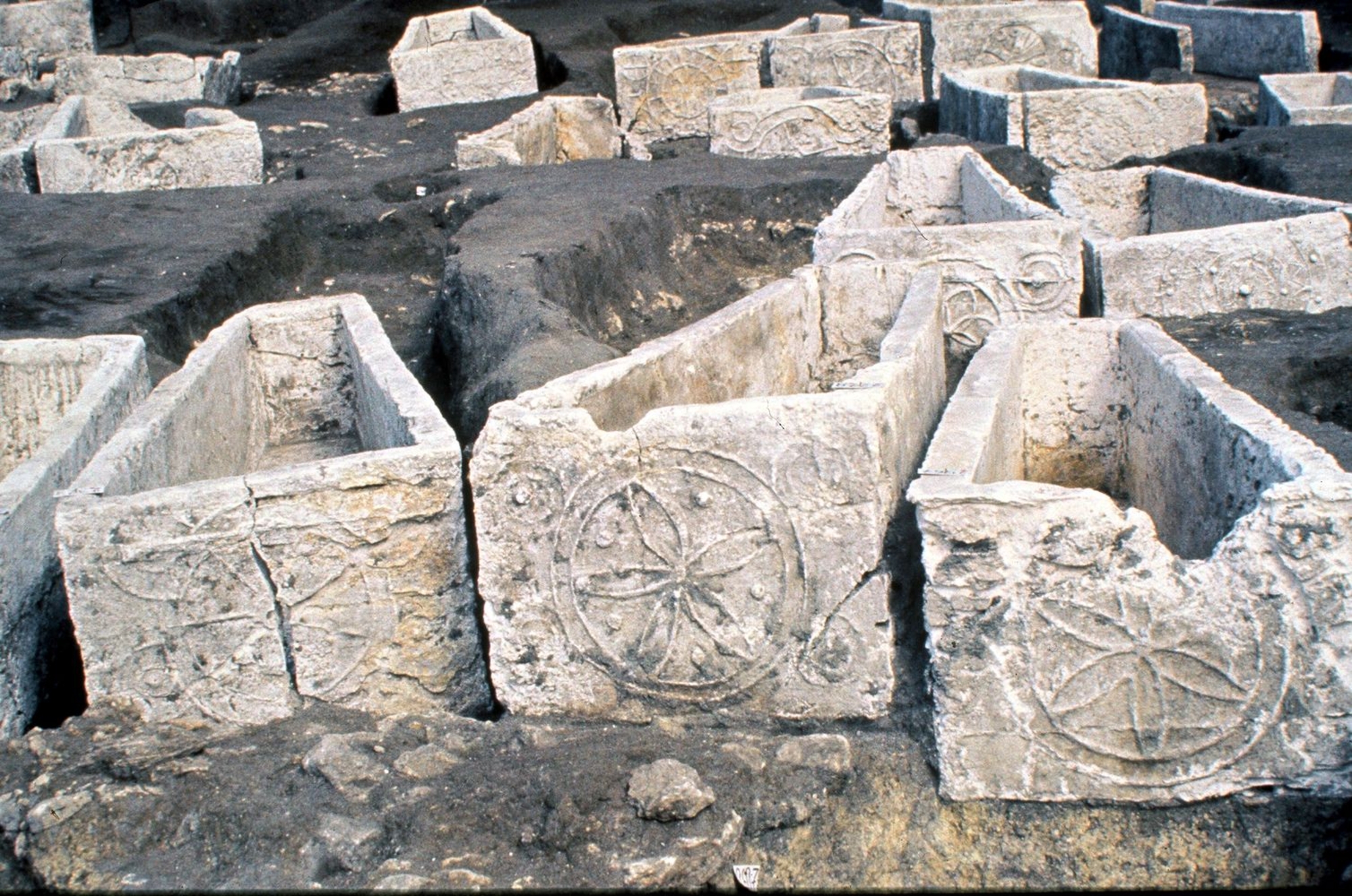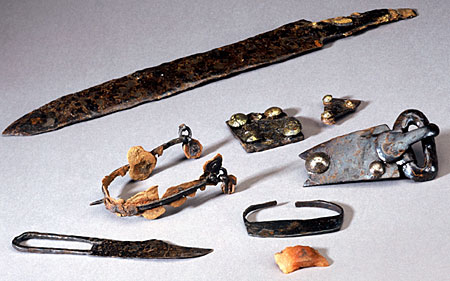- Home
- The town and the abbey
- The site from its origins
- The necropolis, city of the dead
- The grave of a young horseman
Objects from the grave of a young horseman from the early 7th century. © UASD / J. Mangin.
Under Dagobert I, the dead that were interred in Saint-Denis' necropolis were buried with their jewelry and weapons, as well as with everyday objects. These included belt accessories, knife, razor, shears, tweezers, keys, flints and strikers.
A plaster sarcophagus, discovered to the west of the church of Saint-Barthélemy, contained the body of a young horseman. Unfortunately, the grave had been cut through by a foundation. From the funerary objects that remained, archaeologists were able to reconstruct a belt with buckle and back-plate. A scramasax and its sheath hung from a belt mount. The sheath was made of organic material (now lost), and twenty-two copper alloy studs. A purse, which also hung from the belt, probably held the knife-razor as well as an iron striker and flint used to start a fire. The horseman was buried with only one spur, following the custom of the time. It was attached to the left shoe, which was made of leather, using straps fitted with a small buckle and an iron strap-end. A silver coin attributed to the early seventh century allowed archaeologists to date the grave. All of these iron and copper alloy objects are representative of materials found in graves in the outside areas of the basilica's necropolis. They also testify to great mastery in metalworking.

